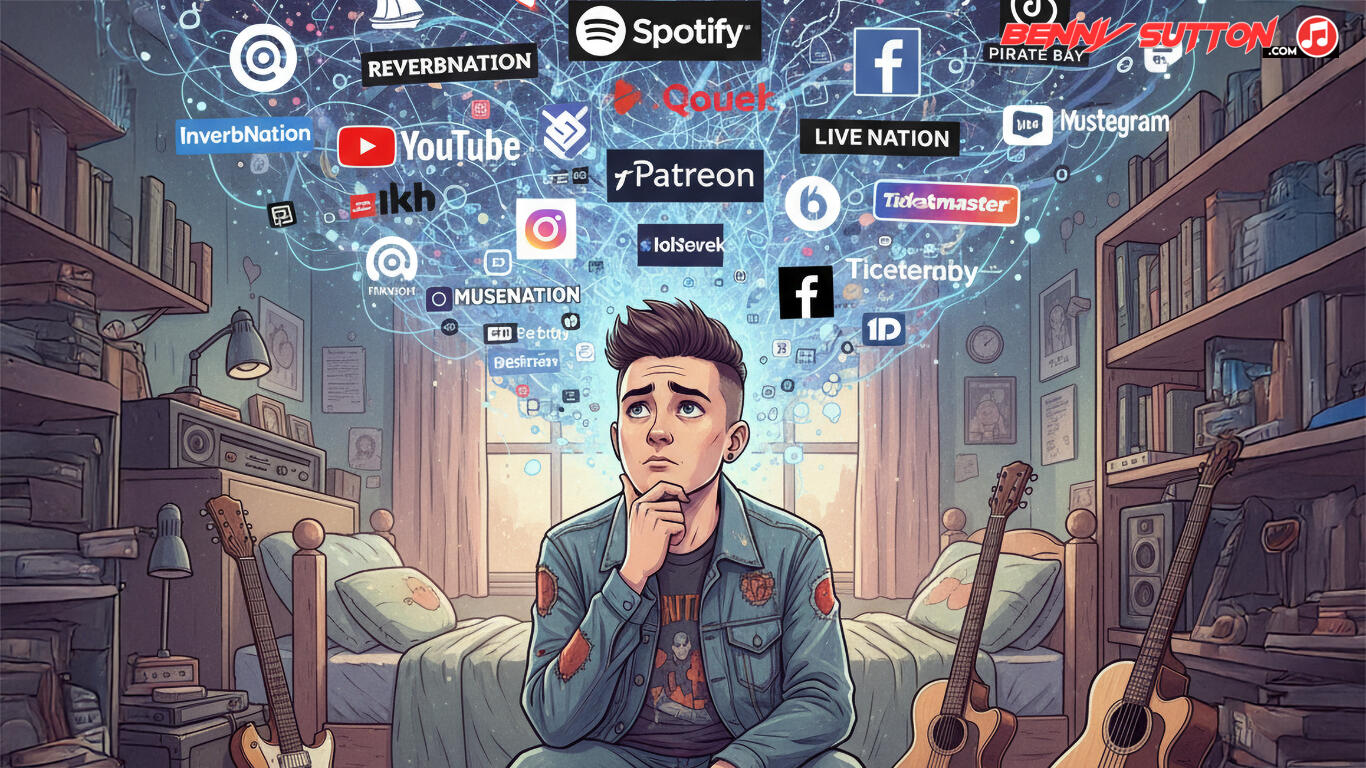Bandcamp is a direct-to-fan music platform that enables artists to sell digital music, physical releases, and merchandise while retaining control over pricing, rights, and fan data. Can't say I've had much to do with them but I keep an open mind.
1. Overview
Founded in 2008, Bandcamp became the go-to site for independent musicians and labels seeking fair revenue splits and community-driven music discovery.
Unlike streaming services, Bandcamp prioritizes ownership and artist control — fans purchase downloads or physical media, and artists receive a large majority of the revenue instantly.
2. Audience & Demographics
| Metric | Value / Insight |
|---|---|
| Monthly Active Users (2025) | ~20 million |
| Artists and Labels | Over 1 million |
| Core Demographic | Independent musicians, niche labels, audiophiles |
| Top Regions | US, UK, Japan, Germany, Australia |
| Genres | Alternative, electronic, jazz, ambient, experimental, metal |
| Fan Base | Music buyers and collectors who value supporting artists directly |
Bandcamp attracts dedicated music fans who prefer to pay artists directly, often buying vinyl, cassettes, or lossless downloads.
3. Role in the Music Ecosystem
| Function | Role |
|---|---|
| E-commerce Platform | Artists sell directly to fans |
| Streaming Alternative | Purchases include unlimited streaming via app |
| Community Hub | Followers, fan messages, curated editorial (“Bandcamp Daily”) |
| Distribution Gateway | Labels use it as a storefront |
| Revenue Engine | Fair artist share model (82%+ of every sale) |
Bandcamp represents the ethical economy of the modern music world — a counterbalance to the low pay rates of major streaming services.
4. How Musicians Use It
- Upload albums, singles, and EPs in multiple formats (MP3, FLAC, WAV).
- Set pay-what-you-want or fixed pricing for releases.
- Sell merchandise such as T-shirts, vinyl, CDs, and tapes.
- Offer fan subscriptions for recurring support.
- Share music through embedded players on personal sites or blogs.
- Track sales analytics, fan locations, and traffic sources.
Example:
An electronic artist releases a digital album for £7 (or more), includes a limited vinyl pressing, and offers free streaming via Bandcamp’s mobile app. Fans can choose to pay £10–15 voluntarily, creating sustainable income.
5. Marketing & Growth Strategies
| Strategy | Description | Why It Works |
|---|---|---|
| Pay-What-You-Want | Lets fans pay above the minimum price | Builds goodwill and higher average income |
| Merch Integration | Combine physical and digital bundles | Boosts per-customer revenue |
| Bandcamp Fridays | 100% revenue to artists (monthly events) | Drives large sales spikes |
| Custom URLs & Themes | Create branded artist stores | Builds identity |
| Leverage Bandcamp Daily | Editorial coverage from staff writers | Credibility and exposure |
| Use Fan Messaging | Notify buyers of new releases | High conversion rate |
Because Bandcamp buyers are already inclined to support artists, authentic communication and transparency drive success better than traditional advertising.
6. Monetization
| Source | Method | Artist Share |
|---|---|---|
| Digital Sales | Direct sales of downloads | ~82% (after fees) |
| Physical Sales | CDs, vinyl, tapes | ~90% after fees |
| Merch Sales | Artist-defined | Full control over price |
| Fan Subscriptions | Monthly recurring revenue | ~85% after fees |
| Bandcamp Fridays | 100% of sales to artists (selected days) | No platform fee |
| Streaming Access | Included free with purchase | Value-add for buyers |
Bandcamp’s system is transactional, not passive — musicians earn money each time fans consciously buy their work, leading to deeper artist-fan loyalty.
7. Etiquette & Risks
| Do | Don’t |
|---|---|
| Upload high-quality audio and artwork | Treat Bandcamp as just another streaming site |
| Engage personally with fans | Spam mailing lists with constant releases |
| Offer reasonable shipping rates | Ignore fulfilment logistics |
| Participate in Bandcamp Fridays | Miss major earning opportunities |
| Use proper genre tagging | Mislabel tracks to game discovery |
| Keep store design consistent | Change pricing frequently without reason |
A polished Bandcamp page acts as a digital storefront, reflecting the professionalism and ethos of the artist.
8. Example Success Stories
| Artist | Strategy | Outcome |
|---|---|---|
| Car Seat Headrest | Self-released albums on Bandcamp | Cult following → Matador Records deal |
| Vulfpeck | Limited vinyl + pay-what-you-want | High sales, strong fan loyalty |
| Mogwai | Direct-to-fan sales of rarities | Immediate income, chart success |
| Independent jazz labels | Use Bandcamp for global reach | New revenue streams from collectors |
| Lo-fi & experimental producers | Free or low-cost downloads | Grew large mailing lists and Patreon support |
Many musicians treat Bandcamp as both storefront and fan club, integrating it with Patreon or mailing lists for long-term engagement.
9. Summary Table
| Feature | Detail |
|---|---|
| Type | Direct-to-fan music and merch platform |
| Best For | Independent artists, niche genres, small labels |
| Demographic | 18–60+, collector-minded fans |
| Revenue Model | Sales commissions (10–18%) |
| Average Pay Rate | 82–90% artist share per sale |
| Best Strategy | Combine merch + downloads + direct fan contact |
| Conversion Path | Bandcamp → mailing list → Patreon / live shows |
| Risk | Low discoverability without active promotion |
